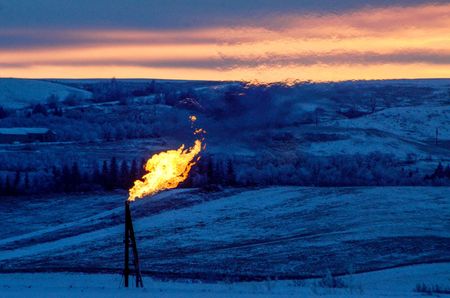By Liz Hampton
(Reuters) – Top U.S. oil-producing states are trying to wrest oversight of carbon capture wells from federal regulators, hoping to speed the oil industry’s preferred approach to combating climate warming amid calls for limits on fossil fuel production.
Companies are proposing carbon capture and storage (CCS) hubs to sequester greenhouse gas emissions from refineries, chemical and natural gas plants, a move that could help slow global warming.
The rules governing the carbon-injection wells for most states require federal approval with the first permits taking around six years to win a green light.
Oil states, including Texas and Louisiana, want to take over permit reviews and enforcement authority, also known as primacy, from the U.S. Environmental Protection Agency (EPA) for carbon dioxide (CO2) and other greenhouse gas storages sites.
The third-largest oil producing state, North Dakota, won oversight in 2018 and issued its first permit last year after an eight-month review. New Mexico, the second largest oil producer after Texas, has begun initial discussions with the EPA for applying to regulate carbon sequestration wells, an official said.
States must demonstrate their own regulations are as stringent as the EPA’s. However, environmentalists worry putting state regulators in charge will lead to lax monitoring once regulatory agencies in oil-friendly states take charge.
The EPA last year launched a probe of Texas’ air quality regulator for not properly monitoring a big air polluter. Environmental groups also have won multi-million dollar settlements in federal courts for pollution unpenalized by Texas.
FASTER PERMITS
States angling for oversight are home to big energy firms proposing underground CO2 storage projects. In Texas, Exxon Mobil Corp is evaluating a massive carbon reservoir off the coast along with more than dozen other energy firms.
The technology will require government support and stable policies, including “a streamlined permitting process for CCS facilities,” Exxon spokesman Todd Spitler said.
Sempra Energy also has an application pending before the EPA for a Louisiana facility tied to a liquefied natural gas plant. The company has shared its plans with the state’s regulator and supports Louisiana’s request for primacy, a spokesperson said.
(For a map of carbon storage projects proposed along the U.S. Gulf Coast, click here: https://graphics.reuters.com/USA-OIL/MAP/gdvzykznlpw/)
Giving states primacy over regulating carbon injection wells can speed up the permitting process through greater efficiency and less red tape, said Marcella Burke, a partner with law firm King & Spalding and former deputy general counsel at the EPA.
“It is cooperative federalism. If we delegate primary regulatory and enforcement authority to the state, we’re saying it can handle things in its backyard, so long as the state meets federal standards ” said Burke.
PATCHWORK REGULATION OR GAME-CHANGER?
Some environmentalists worry that delegating enforcement authority to the states for these carbon sequestration wells could lead to inconsistent rules, lax monitoring and potential hazards such as carbon returning to the atmosphere.
“Rather than a patchwork of state regulations, we need a science-based federal backstop of consistent and strong regulations to guarantee that carbon is actually sequestered and sequestered permanently,” said Patrick Drupp, a clean air expert at the Sierra Club.
The environmental group opposes carbon sequestration in cases where it promotes the continued burning of fossil fuels instead of a faster move to renewable energy, he said.
But state control will be a “game-changer” for speeding up carbon sequestration projects, said Jena Lococo, a program manager for clean energy group ClearPath who previously worked for Exxon. Unpredictable federal processes are an obstacle to getting projects off the ground, she said.
“States that have primacy or are actively working towards primacy will attract more projects within their borders, which will certainly help local economies and industries,” Lococo added.
North Dakota this month issued its second carbon-sequestration permit around seven months after utility Minnkota Power Cooperative applied. Its first permit took eight months to win approval. The only EPA permits for wells currently in operation – both tied to ethanol maker Archer Daniels Midland – took nearly six years, according to ClearPath.
“This is a multi-year process,” said Scott Goldberg, who runs the new Carbon Solutions group at EnLink Midstream, which aims to convert some of its natural gas pipelines in Louisiana to carry carbon dioxide from certain plants to underground storage sites.
North Dakota and Wyoming, which have carbon-well permitting authority, are “ahead of the game,” he said.
(Reporting by Liz Hampton in Denver; Additional reporting by Sabrina Valle and Marcy de Luna in Houston; Editing by Marguerita Choy)





